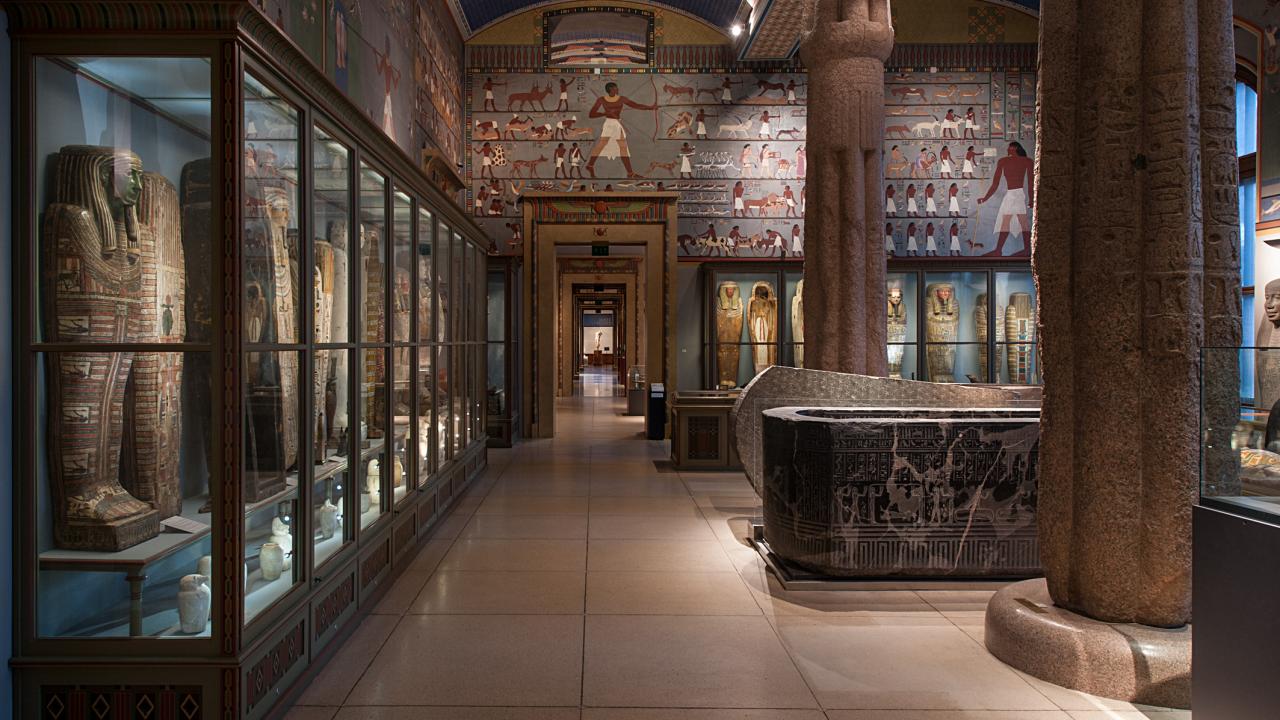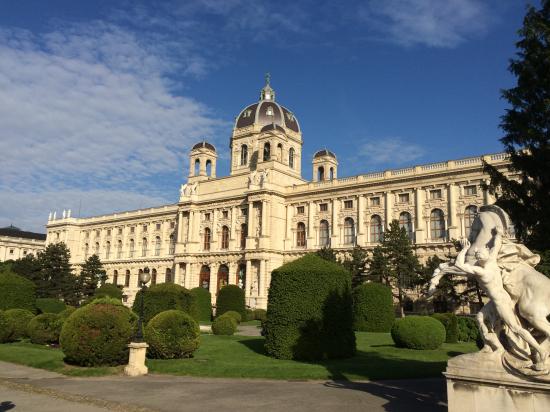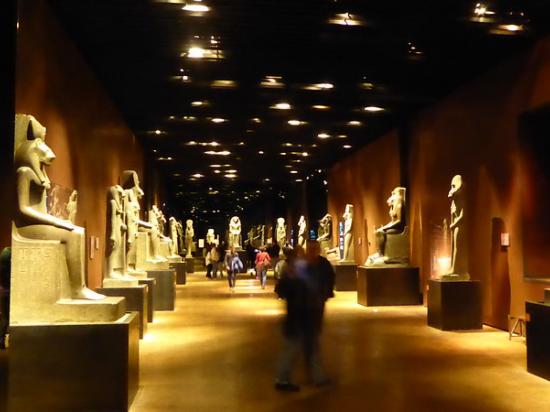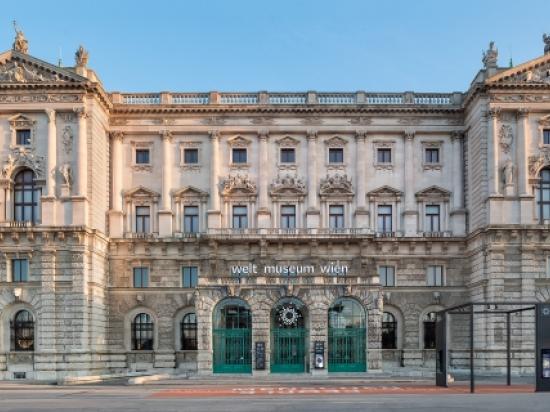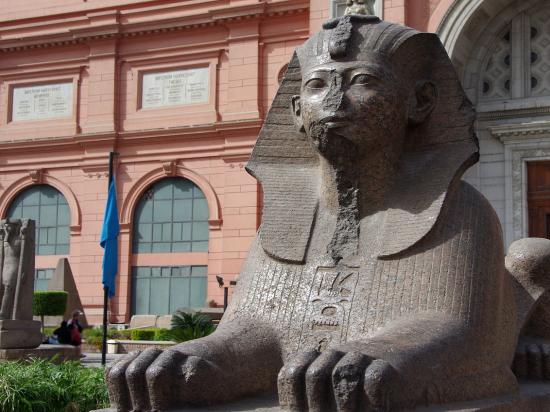The Egyptian Treasures of KHM Vienna
Nestled within one of Europe's most prestigious art museums, the Egyptian collection of the Kunsthistorisches Museum Vienna stands as a testament to the enduring fascination with this ancient civilization. Step into this mystical realm and find yourself transported to a bygone era, where pharaohs ruled with divine authority and the secrets of the afterlife held eternal allure.
The collection showcases a myriad of artifacts spanning thousands of years, each a window into the rich tapestry of Egyptian history and culture. Marvel at the grandeur of colossal statues that once adorned temples and palaces, casting their gaze upon worshippers and subjects with an air of timeless authority. Witness the exquisite craftsmanship of intricate jewelry, delicately carved amulets, and ornate sarcophagi, each telling tales of ancient rituals and beliefs.
One of the crown jewels of the collection is the stunning "Tomb of the Royal Cupbearer" from the reign of Thutmose III. This meticulously reconstructed tomb invites visitors to immerse themselves in the funerary customs and rituals of ancient Egypt. Experience the intimate connection between life and death as you wander through its meticulously adorned chambers, filled with colorful wall paintings depicting scenes from the deceased's journey to the afterlife.
The Kunsthistorisches Museum Vienna's Egyptian collection also showcases a remarkable selection of mummies and their beautifully decorated coffins. These remnants of the past allow us to glimpse into the lives of ancient Egyptians, offering a hauntingly intimate connection with those who walked the banks of the Nile centuries ago.
One cannot overlook the awe-inspiring beauty of the Fayum portraits, a collection of intricately painted funerary portraits that adorned the mummy wrappings. These masterpieces, discovered in the Fayum region of Egypt, capture the individuality and humanity of their subjects with remarkable precision. The eyes seem to follow you as you observe each portrait, inviting you to ponder the lives and stories of those who once lived.
What sets the Kunsthistorisches Museum Vienna's Egyptian collection apart is not only the exquisite artifacts on display but also the meticulous attention to detail in their presentation. The museum's curators have expertly crafted an immersive experience, transporting visitors back in time to the banks of the Nile. Carefully designed exhibits, informative descriptions, and engaging multimedia elements ensure a captivating and educational journey through this ancient civilization.
In conclusion, the Egyptian collection at the Kunsthistorisches Museum Vienna is a treasure trove of wonders that captivate the imagination and transport us to a world shrouded in mystique and grandeur. From colossal statues that embody the power of pharaohs to delicate amulets and intricately painted portraits that tell tales of individual lives, this collection is a testament to the enduring legacy of ancient Egypt. So, dear travelers, step into the Kunsthistorisches Museum Vienna and let the treasures of the Nile unfold before your eyes, for an unforgettable encounter with the marvels of the ancient world awaits.
The highlights of the Egyptian Collection in Vienna are:
The acquisition of the Egyptian collection by the Kunsthistorisches Museum Vienna is a fascinating tale of exploration, excavation, and diplomatic efforts. The collection's origins can be traced back to the late 19th and early 20th centuries when Austria-Hungary, as a major European power, embarked on archaeological expeditions to various parts of the world, including Egypt.
The "Tomb of the Royal Cupbearer"
This meticulously reconstructed tomb from the reign of Thutmose III takes visitors on a captivating journey through ancient Egyptian funerary rituals. Step inside and immerse yourself in the colorful wall paintings and intricate details that offer insight into the belief in the afterlife.
The Mummies and Coffins
Witness the remarkable preservation of ancient Egyptian mummies and marvel at their beautifully decorated coffins. These well-preserved remnants provide a hauntingly personal connection to the individuals who lived centuries ago, allowing visitors to reflect on the delicate balance between life and death.
Fayum Portraits
The collection boasts a stunning array of Fayum portraits, intricately painted funerary portraits discovered in the Fayum region of Egypt. These captivating works of art depict individuals with striking realism and bring a sense of humanity to the ancient past. The eyes of the portraits seem to peer into your soul, inviting contemplation and connection.
The acquisition of the Egyptian collection by the Kunsthistorisches Museum Vienna is a fascinating tale of exploration, excavation, and diplomatic efforts. The collection's origins can be traced back to the late 19th and early 20th centuries when Austria-Hungary, as a major European power, embarked on archaeological expeditions to various parts of the world, including Egypt.
During this time, prominent Austrian archaeologists and explorers, such as Hermann Junker and Otto Rubensohn, conducted excavations in Egypt, unearthing remarkable artifacts and treasures. These expeditions were supported by the Imperial House of Habsburg and the Austrian government, which recognized the cultural and historical significance of these discoveries.
Through careful negotiation and collaboration with Egyptian authorities, the Kunsthistorisches Museum Vienna was granted permission to bring back a significant portion of the excavated artifacts to Austria. This acquisition marked the beginning of the museum's Egyptian collection and laid the foundation for its subsequent expansion and enrichment over the years.
Subsequent archaeological missions and donations from private collectors further enhanced the collection, adding to its depth and diversity. These acquisitions were made possible through collaborations with international institutions, archaeologists, and individuals passionate about preserving and sharing Egypt's cultural heritage.
The Archduke Franz Ferdinand, a prominent figure in European history, played a role in the acquisition of the Egyptian collection by the Kunsthistorisches Museum Vienna. Franz Ferdinand, the heir to the Austro-Hungarian throne, had a deep interest in archaeology and Egyptology. He embarked on a personal expedition to Egypt in 1895-1896, leading a team of archaeologists and scholars.
During his expedition, Franz Ferdinand explored various archaeological sites, including Luxor and Thebes, and conducted excavations that unearthed numerous artifacts. His passion for ancient Egypt led to significant discoveries and the acquisition of valuable objects, further enriching the Egyptian collection.
Following his return to Austria, Franz Ferdinand's efforts to promote and preserve Egypt's cultural heritage continued. He played an instrumental role in establishing the Egyptian Department at the Kunsthistorisches Museum Vienna, which aimed to showcase the artifacts and treasures he had acquired during his expedition and subsequent collaborations with Egyptian authorities.
Tragically, Archduke Franz Ferdinand's life was cut short in 1914 when he was assassinated in Sarajevo, an event that triggered the outbreak of World War I. Despite his untimely demise, his contributions to archaeology and Egyptology, including his involvement in the acquisition of the Egyptian collection, left a lasting legacy.
Today, the Archduke Franz Ferdinand's connection to the Kunsthistorisches Museum Vienna's Egyptian collection serves as a reminder of his passion for ancient civilizations and his efforts to preserve cultural heritage. The collection stands as a testament to his vision and enduring contribution to the understanding and appreciation of Egypt's rich history.
It is important to note that the museum adheres to ethical practices and legal requirements when acquiring artifacts, working closely with relevant authorities and international conventions to ensure the responsible stewardship of cultural heritage.
